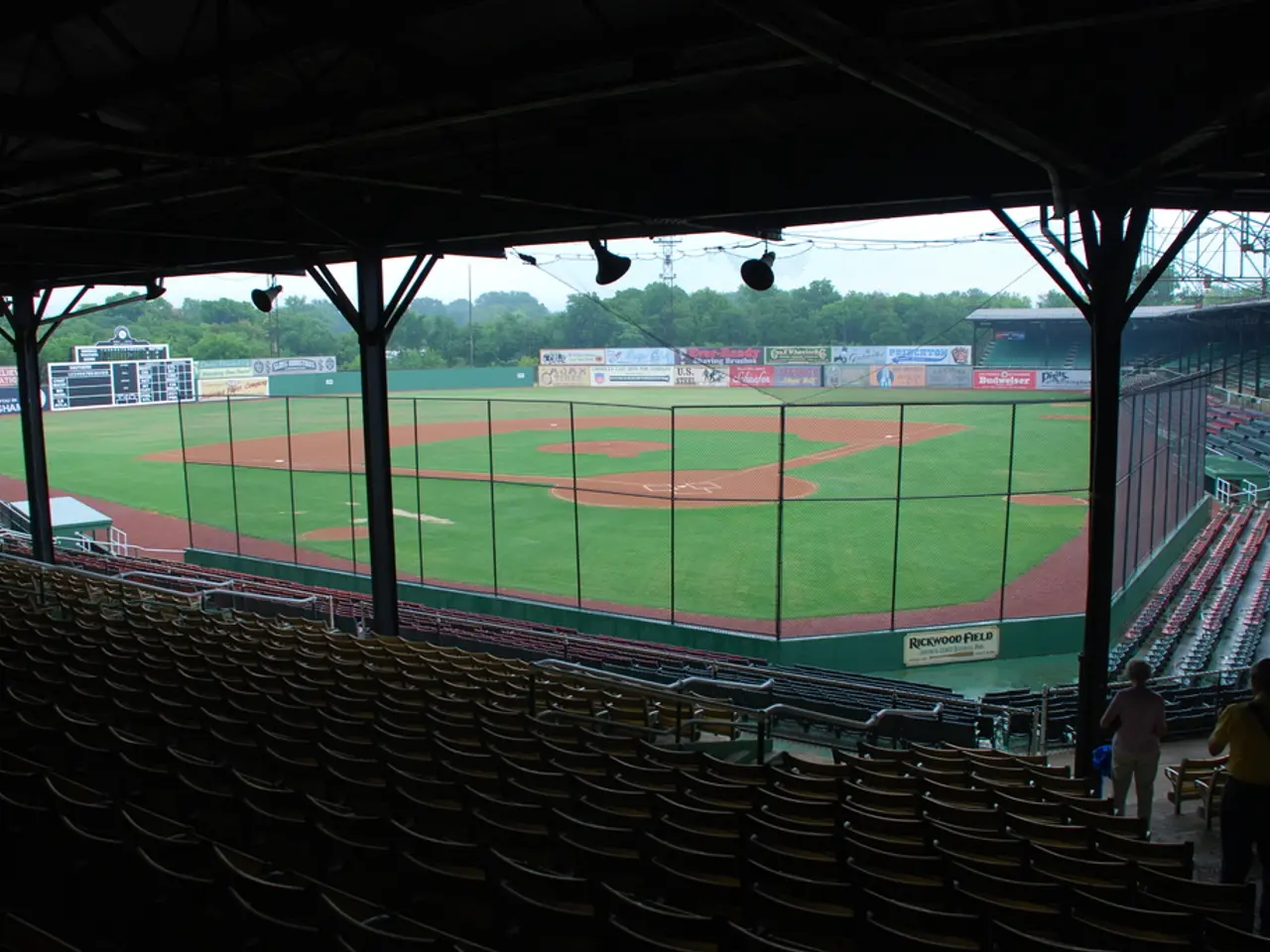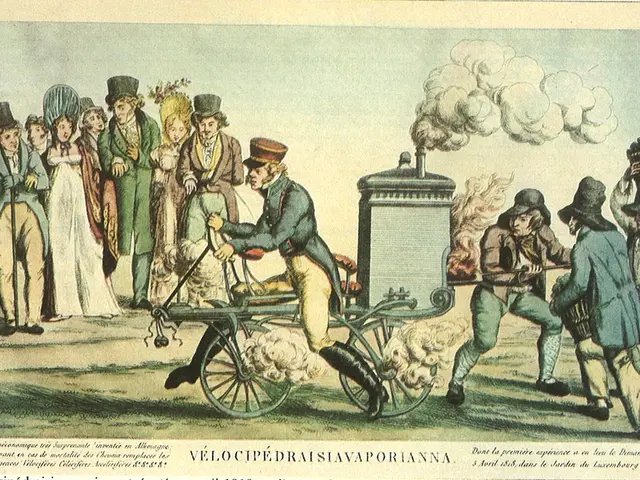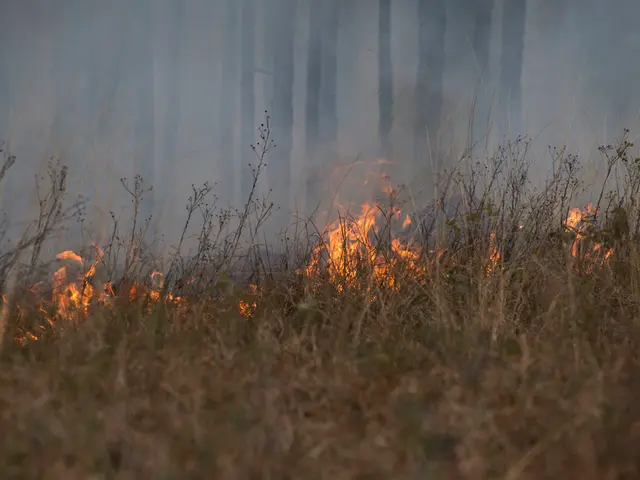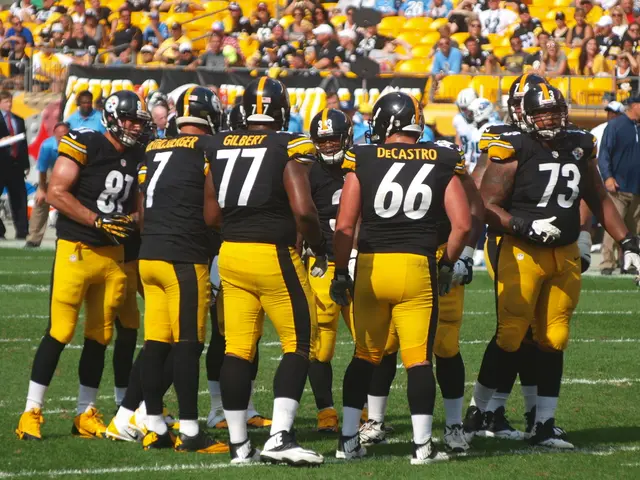Nebraska's College World Series Experience Linked to Climate Change Effects
In the heart of America's heartland, the annual Men's College World Series in Omaha, Nebraska, is a cherished tradition. However, climate change is set to introduce new challenges to this beloved baseball tournament.
Omaha, with its humid continental climate, already experiences hot summers marked by frequent thunderstorms. Climate change is expected to intensify these extremes, leading to increased droughts, heat risk, and heavy rainfall events [3][4].
One of the most immediate concerns is extreme weather, particularly lightning and hail, which pose significant safety risks for outdoor events like the College World Series. Advanced weather monitoring has become crucial, as demonstrated in 2025, when meteorologists used radar and lightning detection systems to manage game delays and ensure player safety [1].
Rising temperatures and changing precipitation patterns may also lead to game interruptions due to weather and impact turf and field conditions. Moreover, the heat island effect, more pronounced in cities like Omaha, is expected to make warming temperatures even more pronounced [5]. Large areas of asphalt surrounding the College World Series venue in downtown Omaha contribute to this effect.
The heat island effect can also lead to heat-related health risks, as evidenced by the 2022 reports of paramedics treating dozens of people each day and transporting multiple people to the hospital for heat-related illness [6].
On a brighter note, the probability of a home run increases with temperature, even when the ball's launch angle and speed are the same [7]. This could potentially spice up the games, but it also raises questions about player safety in the face of increasingly hot and humid conditions.
To address these challenges, it's crucial to reduce greenhouse gas emissions and implement climate adaptation and mitigation measures. Green infrastructure, such as planting more trees and vegetation, cool pavement and cool roof technologies, can help reduce the heat island effect in downtown Omaha [8].
The College World Series contributes significantly to the local economy, particularly the bar and restaurant, hotel, entertainment, and recreation industries. Ensuring the tournament's continuity amidst climate change will be essential for maintaining this economic boost.
For more detailed information on climate change impacts in Nebraska and the Northern Great Plains region, see Chapter 25 of the Fifth National Climate Assessment [9]. The College World Series in Omaha will likely face increasing challenges from heat, storms, and extreme precipitation events, demanding advanced weather monitoring and flexible scheduling to protect players and fans amidst the evolving climate conditions.
[1] https://www.weather.gov/omx/radar [2] https://nca2018.globalchange.gov/report/regions/midwest/ [3] https://www.climatecentral.org/news/nebraska-climate-change-impacts-23002 [4] https://www.climate.gov/news-features/understanding-climate/nebraska-climate-change-impacts [5] https://www.epa.gov/heat-islands/heat-islands-cities [6] https://www.omaha.com/news/local/crime-and-courts/paramedics-responding-to-record-number-of-heat-related-emergencies-in-omaha/article_00b7029a-2249-54c4-b414-8e0d58070c8e.html [7] https://www.nature.com/articles/s41598-018-35548-z [8] https://www.omahaparks.org/green-infrastructure [9] https://nca2018.globalchange.gov/chapter/25/
Read also:
- Germany's three-month tenure under Merz's administration feels significantly extended
- Hurricane-potential storm Erin forms, poised to become the first hurricane in the Atlantic Ocean this year.
- Skepticism About Climate Change Previously Held; Factors That Shifted Perspective Revealed
- Heavy rain causes flash floods in Hyderabad, resulting in severe waterlogging and disruptions to city life during a heavy downpour.








